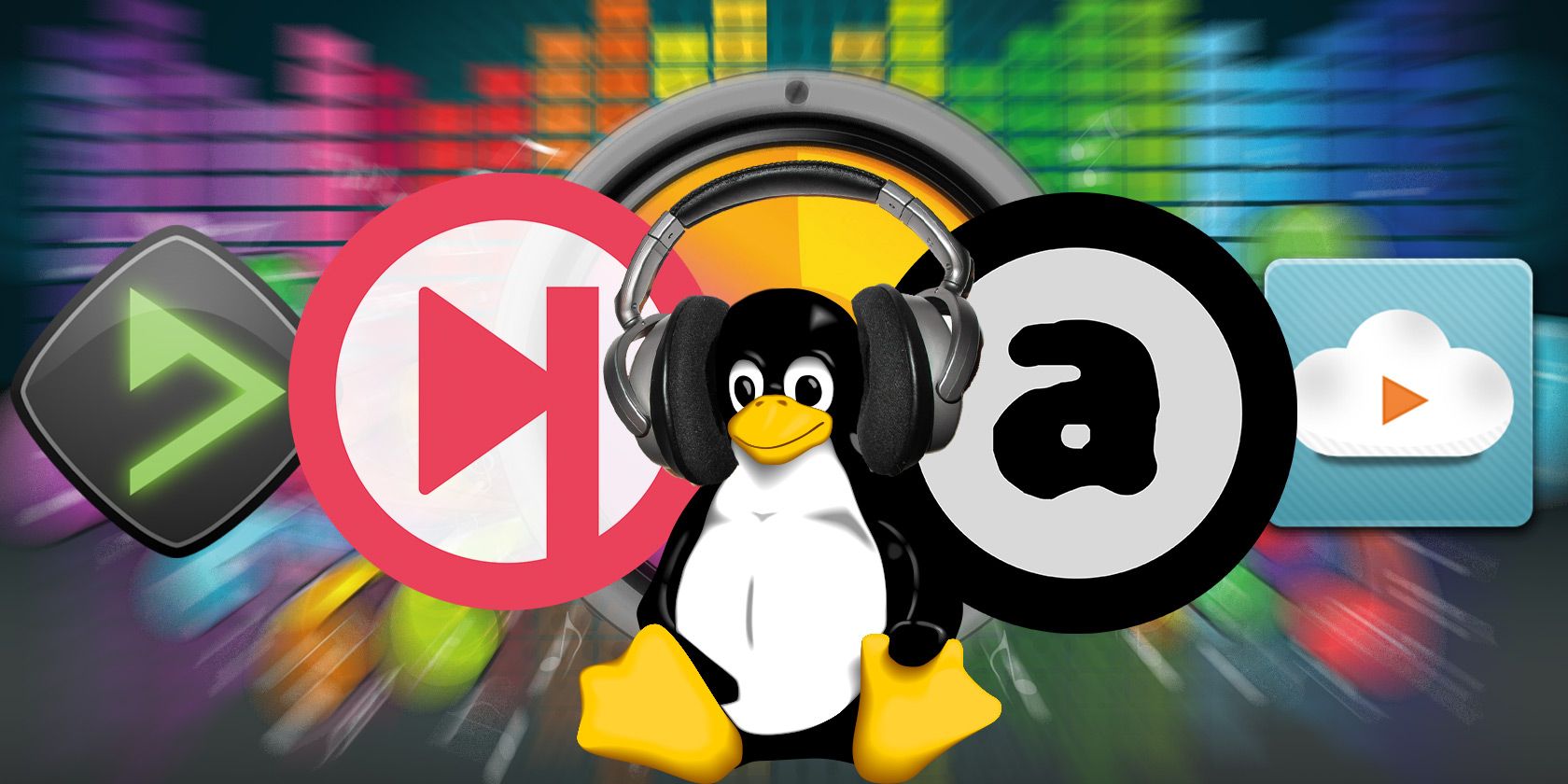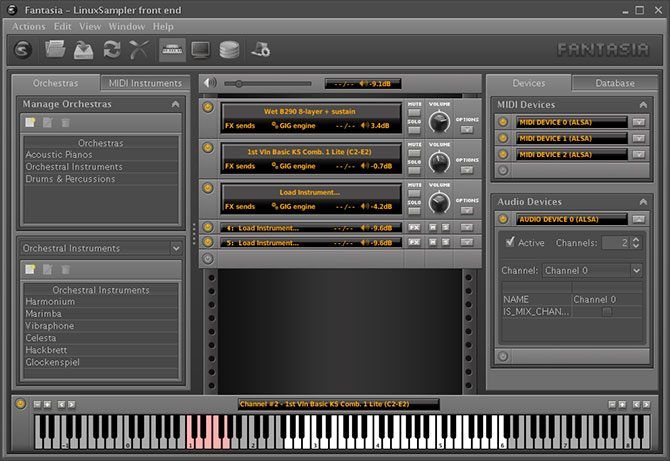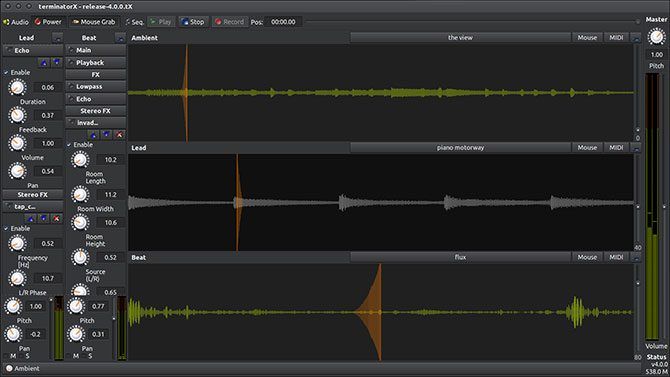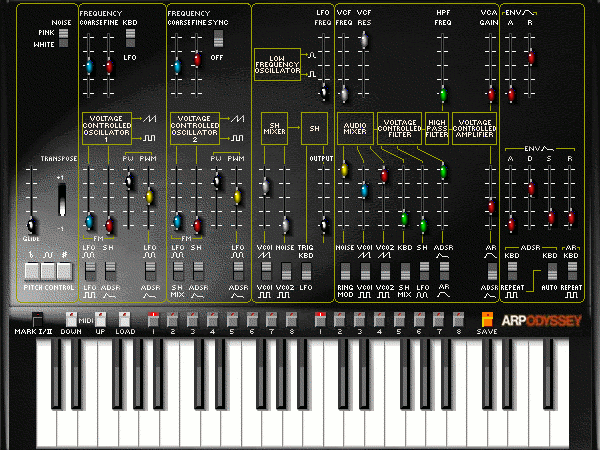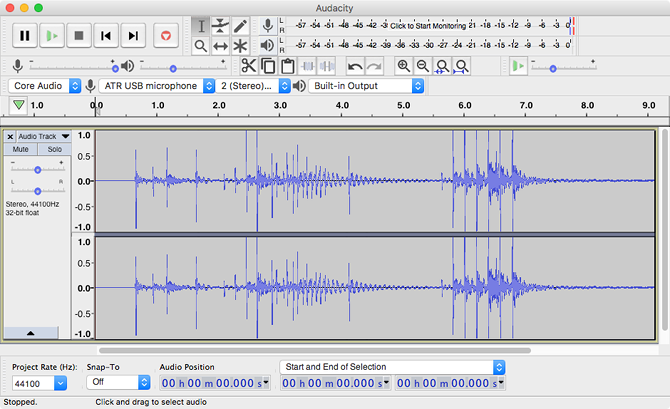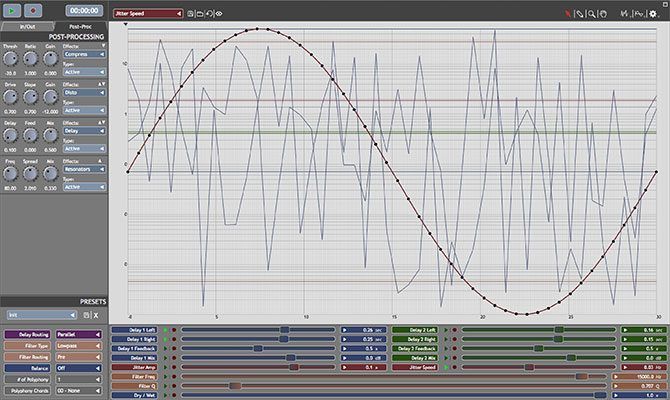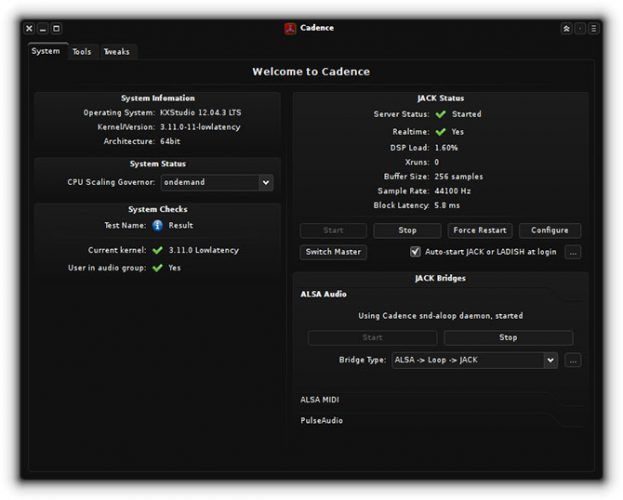Some people believe that you need the latest MacBook Pro and a suite of pricey commercial software to make music, but even on macOS there's plenty of free software for making music too. Money can't buy talent, and talented individuals can often make great use of free tools.
Sure, dropping a couple of thousand on a high-end synth engine or workstation might make life easier, but it's not a pre-requisite when you can use free music production software instead. Linux is home to some very powerful and flexible music production applications for beginners to professionals.
Let's take a look at the best free music making applications for Linux musicians!
Linux Digital Audio Workstations
Ardour
Ardour is probably the best free digital audio workstation (DAW) available for Linux. It's a complete set of tools for home recording and bedroom production, whether you're recording directly from microphones, using MIDI controllers such as these, relying on plugins for synthesis, or a combination of all three.
Not only can you record and edit waveform audio, you can arrange audio and MIDI to control hardware and software with an unlimited multi-track audio sequencer. There's support for AudioUnit (AU), LV2, LinuxVST, and LADSPA plugins with full automation. Ardour also has support numerous hardware controllers, video support for soundtrack creation, in-depth routing thanks to JACK, and comprehensive export options.
Put in the time to master Ardour and you'll be amazed what you can achieve for free.
Download: Ardour
LMMS
Previously known as Linux Multimedia Studio, LMMS is now a cross-platform project with Windows and macOS versions too. While LMMS lacks some of the features seen in Ardour, it's still a powerful suite of audio tools for home recording and production.
LMMS comes with 19 built-in software instruments including synths and drum machines, more than 1000 samples, support for MIDI instruments and hardware interfaces, and an intuitive interface. The multi-track sequencer makes it easy to work with VST instruments, samples, and MIDI sources and there's enough included to let make music right out of the box.
It's perfect for newcomers since it lacks some of the complexities seen elsewhere, and it's a lot of fun to play around with.
Download: LMMS
Tracktion T7
Tracktion T7 has no stripped-down free version, though it is a feature-restricted version of Tracktion's Waveform 9 and 8 DAWs. It's a cross-platform workstation with support for 64-bit versions of Linux, and unlimited audio and MIDI tracks.
There's a full range of MIDI tools at your disposal, including automation, MIDI learn functionality for external controllers, and a simple MIDI editor too. The professional time-stretch feature makes working with samples a breeze, and there's extensive support for software instruments and plugins in VST, AU, and LinuxVST format.
Tracktion is worth a look at the unbeatable price of $0, though familiarize yourself with its limitations before you dive too deep.
Download: Tracktion T7
Qtractor
Another solid choice for home studios and bedroom production is Qtractor, a Qt C++ app developed from the ground-up for Linux. It's a multi-track audio sequencer and recorder that uses JACK for audio, and also supports MIDI via ALSA for non-linear audio editing.
Like Ardour it features an unlimited number of tracks per session, as well as its own mixer and monitoring controls. It also has a simpler interface than Ardour, which may be less intimidating for complete newbies. Plugin support includes VSTi, LV2, DSSI and LADSPA, and there's a robust set of MIDI tools for sending and receiving instructions to and from hardware instruments.
It's another great place to start, though you'd best read up on the Qtractor documentation for best results.
Download: Qtractor
MusE
MusE is an even simpler multi-track audio and MIDI sequencer, complete with realtime recording and playback, automation, and an easy to grasp drag and drop interface. Edit MIDI parts via the piano roll, drum editor, and score editor; and host software plugins in DSSI, VSTi, LV2, and SoundFont format.
The interface is a bit old-hat, but don't let that put you off. MusE covers most of the basics without bogging you down with features you don't need or aren't ready for. You can use it with JACK to control (or be controlled by) multiple applications, so it might be a nice supplement to your existing workflow.
Download: MusE [Broken URL Removed]
Rosegarden
Rosegarden is a sequencer with a difference. It's heavily weighted toward MIDI editing, with a particular focus on musical notation. If you know how to read music, and you're looking for intuitive ways to write and edit MIDI instructions then Rosegarden should be high on your list.
You could use it to write and proof your compositions, then print them out to use as regular sheet music. There's also support for recording, mixing and triggering samples; as well as hosting synth plugins in the DSSI format. It should be said there are more robust tools for this if that's your primary focus though (check out a few of the entries above).
Download: Rosegarden
Instruments, Plugins, and Synthesis
Hydrogen
Hydrogen is a free, open source drum machine for Linux, Windows, and macOS. It's a pattern-based sequencer focused entirely on triggering samples, of which there's a healthy library of sounds included in the FLAC compressed format. You can also import your own samples, and edit them in-app.
What makes Hydrogen so powerful is the ability to have an unlimited number of instrument tracks and patterns, with individual volume, panning, muting and solo capabilities. You get time-stretching and pitch shifting, support for MIDI control and MIDI learn, multiple layers for each instrument (up to 16 samples) and JACK, ALSA, PortAudio and OSS drivers.
There's also a robust mixer, with support for effects using LADSPA plugins. It's a beast, but is best used alongside another DAW or sequencer via JACK for best results.
Download: Hydrogen
Guitarix
If you know how to play guitar, you'll love Guitarix. It's a Linux-only virtual guitar amplifier for use with JACK. It runs as a separate standalone program, and isn't available as a plugin (though it can make use of LADSPA and LV2 plugins for even more guitar processing fun). The app takes a guitar's mono signal via a sound card, processes it, and allows you to route it to your speakers or into an app of your choice.
It's the processor of choice for Linux guitarists using DAWs like Ardour to create finished productions. Guitarix includes more than 25 different built in modules to create truly unique riffs and melodies, including reverb, phasers, auto-wah, flangers, overdrive, fuzz and more. Developers promise a latency of around 10ms on a properly set-up system.
For best results, pair Guitarix with a low-latency Linux kernel or audio-focused distribution like AVLinux.
Download: Guitarix
LinuxSampler (QSampler, Fantasia)
LinuxSampler is a highly stable and low-latency modular sampler for triggering samples. In its barebones form, LinuxSampler lacks a graphical user interface (GUI) but you can download the Qt-based QSampler or Java-based Fantasia (screenshot above) front-ends for controlling the app.
Linux users can host VSTi, DSSI, and LV2 plugin versions of LinuxSampler in their favorite DAW, receive MIDI input from ALSA, JACK and MidiShare sources, and send audio to ALSA or JACK for use alongside other audio software.
Download: LinuxSampler
FluidSynth (Qsynth)
FluidSynth is a SoundFont 2-compatible real-time software synthesizer, and Qsynth is a GUI front-end that allows you to control it from a Qt-based interface. FluidSynth has found its way into many modern applications including LMMS, MusE, and VLC among others.
The synthesizer requires the use of SoundFont files, which are sample-based instrument sounds found on websites like Hammersound. Combine the Qsynth with SoundFont files, JACK, and your choice of DAW to vastly expand your instrument options.
Download: Qsynth | FluidSynth
amSynth
amSynth is an analogue modelling synth designed to emulate classic analogue synths like the Minimoog. It's a polyphonic synthesizer available in VST, LV2, DSSI, JACK, ALSA, and OSS formats for Linux (and also as an AU for macOS).
The plugin includes dual oscillators, monophonic, polyphonic, and legato keyboard modes, dual envelope generators and LFO modulation on the oscillators, filter, and amplitude. There's also distortion and reverb for creating even more wacky sounds. You will need a DAW or sequencer that can host the plugin to make any use of it.
Download: amSynth
TerminatorX
TerminatorX is a unique app that allows you to scratch audio files just like you would on a real turntable. It's a standalone piece of software rather than a plugin, with multiple turntables, real-time effects (and LADSPA plugin support), sequencer, and MIDI support.
https://terminatorx.org/files/jazzyscratch.mp3
You can use JACK to route audio to other apps, so you can record scratches for use in production or even perform real-time. Control is done using the mouse, but there's also support for MIDI instruments and a number of dedicated fans who have built their own virtual turnable interfaces.
Download: terminatorX
Bristol Audio Synthesis
Bristol Audio Synthesis is a synth emulation package that emulates some of the most famous digital instruments of all time. These include Moog synths like the Voyager, minimoog, and Sonic-6; ARP's Odyssey, Roland's Juno-6, the KORG MS-20 and Polysix, Yamaha DX, and the Commodore 64 SID chip.
The package works as a standalone app with both JACK and MIDI support for routing to other apps and control via hardware interface. There's no Windows or Mac version and even getting it working on BSD will prove quite a challenge.
Download: Bristol Audio Synthesis
Linux Audio Editors and Other Tools
Audacity
Audacity is the cross-platform multi-track audio editor that everyone loves. And that's because it's one of the most simple yet essential tools to have at your disposal. Whether you're just looking to trim a sample down to size, apply compression, or remove ambient noise from a track, Audacity can do it all.
Among the standout features are simple audio recording from multiple sources, post-processing and mixing of audio (in some cases whole albums), and support for LADSPA and VST plugin hosting. Check out our tips for getting the most out of Audacity.
Download: Audacity
Cecilia
Cecilia is a powerful audio signal processor that lets sound designers create custom interfaces. It's an advanced tool with which you can achieve some spectacular results if you know what you're doing. The app is cross-platform, with an extensive user manual aimed at bringing newcomers up to speed.
Not only can you apply effects to existing audio, but Cecilia is also capable of sound synthesis. This includes time-stretching, delay, reverb, and particle generators. Check out the rest of AJAX Sound Studio's tools including modular synth Zyne and granular synth engine Soundgrain.
Download: Cecilia
JACK
JACK is intermediary software that allows many of the apps listed here to communicate with each other. It facilitates the processing of audio with effects, recording into a DAW, and even live performance. Some of these apps (like Ardour) will install JACK for you, while others may not, so you might want to download it yourself.
Either way it's an essential tool for anyone thinking of using Linux for audio production.
Download: JACK
Cadence
Cadence is a set of tools aimed at producing audio. It includes simple additions like the JackMeter for monitoring peaking, to a capture tool for rendering audio through JACK called (unsurprisingly) Render. Other tools include Catia, a patching app for linking JACK sources, and audio plugin host Carlia for running LADSPA, DSSI, LV2, VST2/3 and AU plugins on Linux.
Download: Cadence
Start Making Music on Linux
You can, and should, use these tools to get started making music with Linux today. But if you're still searching for that perfect distribution, check out our roundup of Linux distros aimed at creative types for audio, video, and media production.

